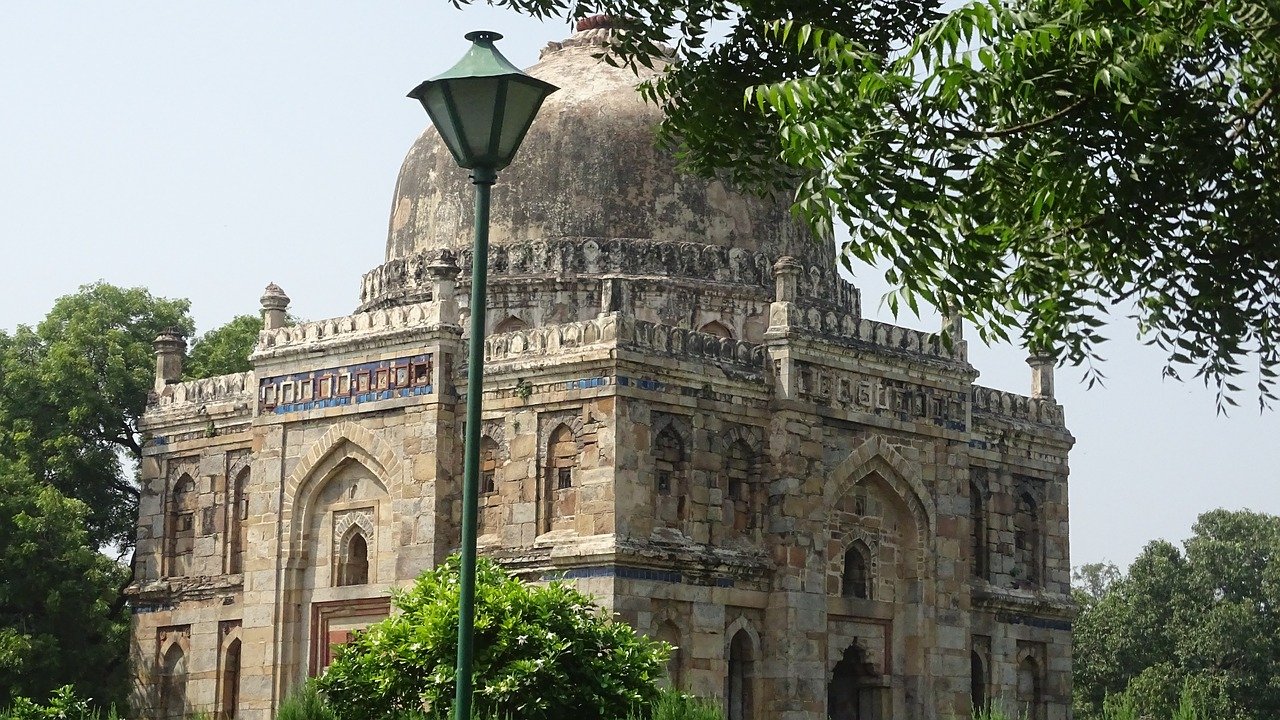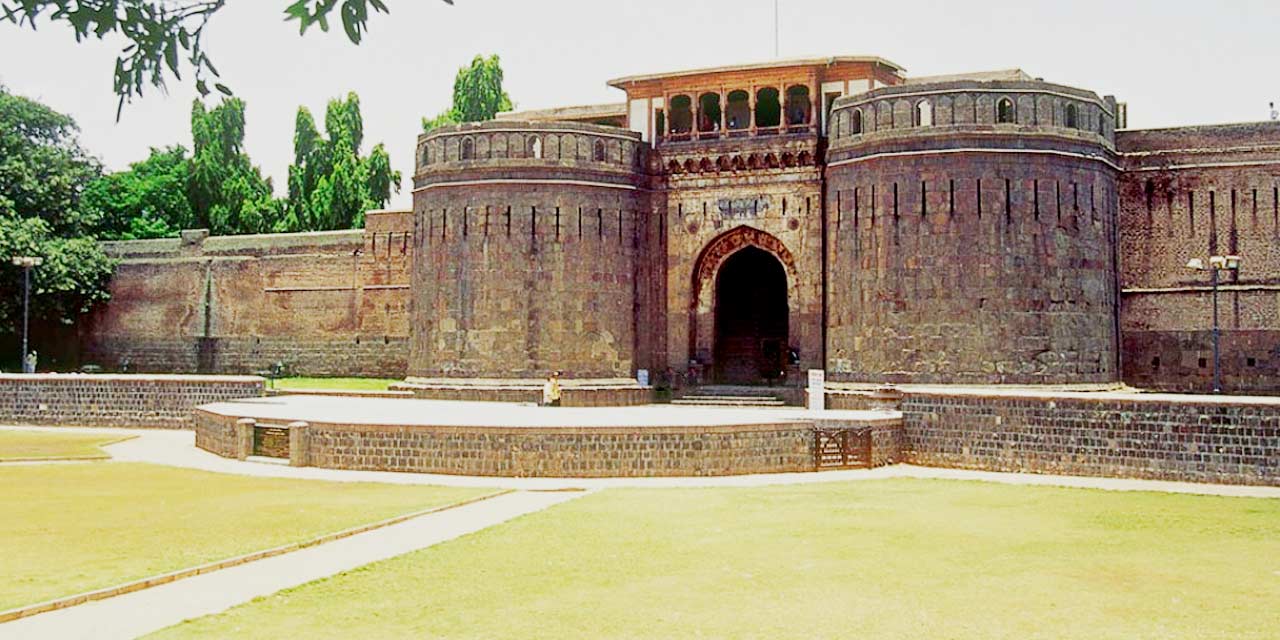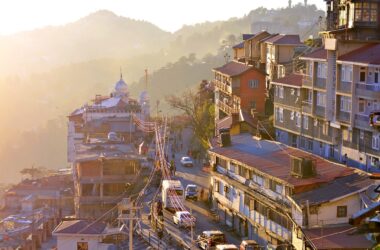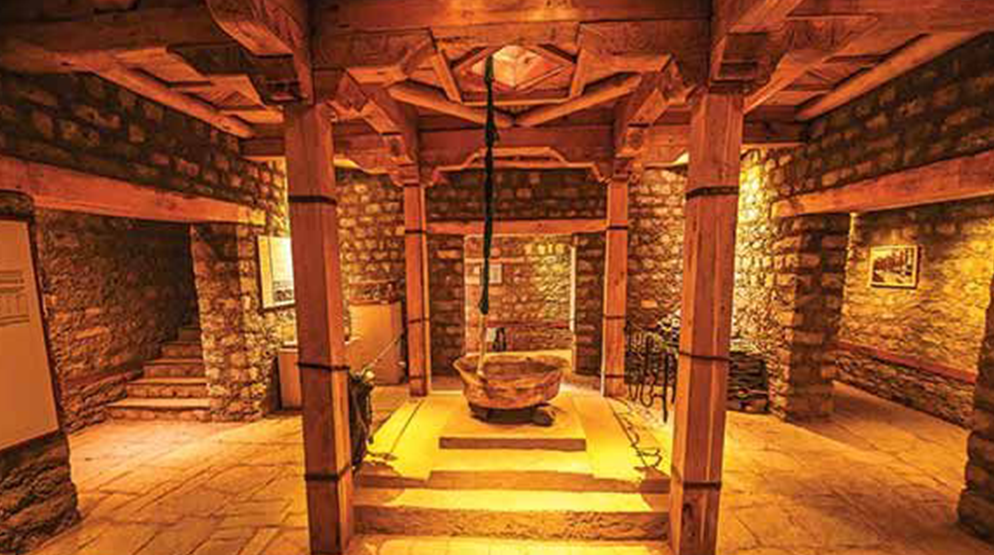Everything you imagined about India being full of turmoil and activity comes alive in Delhi’s Chandni Chowk. This major road and the surrounding market area is one of the most crowded places in India. Nevertheless, it is also the place where you will find some of the best street food, spices, and cheap items. Plan your trip there with this complete guide to Chandni Chowk. Don’t forget to explore it!
History
These days, it is hard to believe that Chandni Chowk was once a stately resort and a route for royal processions during the Mughal period. It was built in the mid-17th century as part of Shahjahanabad, the extravagant capital city founded by the fifth Mughal emperor, Shah Jahan when the Mughal rule was at its height. As the central road to Shahjahanabad, Chandni Chowk ran a wide straight line along the outer wall of the city, connecting a gate to the Red Fort, so that the fort could be viewed from the road at all times.
It is said that Chandni Chowk, which means Moonlight Square, got its inspiring name from the reflection of the moon in a large pond of water. The pond apparently existed in the square opposite the present Town Hall, but the British built a clock tower over it (the clock tower collapsed in 1951). Gradually the entire street and the surrounding area came to be known as Chandni Chowk.
The market area around Chandni Chowk was designed by Shah Jahan’s eldest daughter, Jahanara, and became the city’s main market. Unlike today’s crowd, it was laid out in orderly squares, with pleasing gardens and palatial buildings. It also included a caravanserai (tavern) to accommodate the many traders coming from Asia and Europe. One of Shah Jahan’s wives, Fatehpuri Begum, added another grand landmark to Chandni Chowk, Fatehpuri Masjid.
As the walled city grew, it attracted artisans and professionals of all kinds from all over India to render services to the royal household. They grouped themselves in different lanes of Chandni Chowk according to their occupation. The rich built magnificent Havelis (Havelis), some of which have been restored.
Chandni Chowk retained its aristocratic status in the early 18th century before the fortunes of the royal family began to decline. It was a place for important people to gather and shop for expensive jewelry, gems, and perfumes. However, the walled city and Chandni Chowk were repeatedly attacked and plundered during the long period of instability following the death of Emperor Aurangzeb in 1707.
The Indian Rebellion of 1857 and the consequent end of the Mughal Empire brought further changes to Chandni Chowk. Many structures were destroyed in the rebellion. After the British captured and captured the Red Fort, the area was changed to their liking. This included remodeling the gardens and building new colonial-style buildings such as the Town Hall. Once again there was a stir among the traders. After India gained independence from the British, unbridled commercial development left the grandeur of Chandni Chowk.
Chandni Chowk is still considered one of the top markets in Delhi. These days it’s an overcrowded and crumbling commercial area, with a bewildering jumble of vendors, though all competing for space. However, a recent redevelopment project has revamped the main road from the Red Fort and Fatehpuri Masjid, turning it into a vehicle-free zone from 9 am to 9 pm. (Except cycle rickshaw). The tangle of overhead wires has been placed underground and LED lighting, trees, public toilets, seats, and a paved sidewalk have been added.
Location
Chandni Chowk is located in the heart of present-day Old Delhi, a few miles north of the business district of Connaught Place and the Paharganj backpacker area. It is easily and conveniently accessible by metro train. The nearest metro train stations are Chandni Chowk on the Yellow Line and Lal Quila (Red Fort) on the Heritage Line, an underground extension of the Violet Line. Taking a train there will help you avoid traffic jams.
What to Buy and See
Although the lanes of Chandni Chowk may sound intimidating, vendors are largely grouped together in specialist markets based on what they sell. This makes it somewhat easier to find what you’re looking for. If you want something specific or you’re feeling overwhelmed (especially if you’re visiting India for the first time), it’s a good idea to take a personalized shopping trip. The one organized by Ketaki of Delhi Shopping Tours comes highly recommended. Delhi Magic also organizes a practical Old Delhi Market Walk.
Most of the tourists are perfumes and jewellery, clothes, and saris at Katra Neel, shawls and peels at Moti Bazar, sunglasses and shoes at Ballimaran Market, brass and copper antiques at Gali Gulian and Asia’s largest spice will be in the market. Khari Baoli. Other popular items include all the trimmings for an Indian wedding at Kinari Bazar, books and stationery in Nai Sarak, electronics around Bhagirath Palace, cameras at Kucha Choudhary Market, chemicals at Tilak Bazar, and hardware and paper products. Chawri Market.
Chandni Chowk is not just for shopping. Foodies will love to sample the famous street food of Delhi, which is served in age-old outlets. Paratha Wali Gali is famous for its succulent deep-fried stuffed parathas. Stop at the old famous Jalebiwala near Dariba Kalan for crunchy jalebis and samosas.
If you are serious about eating out, then guided dining through Chandni Chowk will provide the best experience. There are a few to choose from, such as the Old Delhi Food Walk or the Old Delhi Food Trail.
Those interested in learning more about the heritage of the region should sign up for this very popular Old Delhi Market Walk and Haveli Tour, which also includes the opportunity to try some street food. It is operated by the owner of Masterji Ki Haveli, one of the restored Havelis in the area. The journey ends at the haveli for a traditional meal.
There are other old Havelis scattered throughout the area where you can visit to catch a glimpse of the erstwhile grandeur of Chandni Chowk. Dharampura, a 19th-century haveli on Gali Guleiyan, was beautifully restored in 2016. Its restaurant serves modern Indian cuisine and hygienically prepared street food (if you are wary of getting sick). You can stay there too. Some immersive local experiences are offered. Drop into nearby Tripti Handicrafts for a stunning range of brass artifacts.
Nowghara Lane has many old Havelis dating back to the 18th century, whose exterior is painted in colorful colors, which belong to the Jain community. It is located in the Kinari Bazar area.
The Mirza Ghalib ki Haveli in Gali Ballimaran was the home of the acclaimed 19th-century Urdu poet Mirza Ghalib. It has been converted into a museum by the Archaeological Survey of India.
Chunmal’s mansion rambling in Katra Neel belonged to Rai Lala Chunmal, a wealthy cloth merchant and the first Municipal Commissioner of Delhi. It is still privately owned by his descendants, although they are in the process of selling it due to the high maintenance cost.
Close to Jama Masjid, the 200-year-old, Anglo-Indian mansion has been converted into a funky Walled City Café and Lounge. It is a perfect place to relax and unwind.
If you walk along the main road of Chandni Chowk from Red Fort to Fatehpuri Masjid, you will find remarkable places of worship of different religions. These include the Sri Digambar Jain Lal Mandir (with its attached Charity Bird Hospital, which you can visit) and Gurdwara Sis Ganj Sahib (built on the site where the ninth Sikh Guru, Guru Tegh Bahadur, was beheaded by Emperor Aurangzeb in 1675. was given).
It is to be known that most of the shops in Chandni Chowk are closed on Sundays. However, the Chor Bazaar (Thieves Market) near the Red Fort comes to life early in the morning. Arrive there before 8 am to pick up the luggage. A book market is also held on Sunday mornings at Mahila Haat, opposite the Broadway Hotel on Asaf Ali Road, south of Chandni Chowk (the nearest railway station is the Delhi Gate Metro station on the Violet Line). It is Sunday Book Market which was shifted from Daryaganj in mid-2019.
Safety and Etiquette
Chandni Chowk will blow your senses. Expect a huge dose of culture shock! Wear comfortable shoes, wear conservative clothing, and be prepared to walk a lot. Women will find it useful to carry a scarf, especially if going to mosques.
Access to Google Maps on your cell phone will be invaluable for navigating your way. Don’t be afraid to stop and ask for directions too.
Pickpockets work in the field, so take extra care to keep your belongings safe.
When shopping, bargain with vendors to get the best price. However, if a deal sounds too good to be true, it probably is. Counterfeit products are widely sold.
Lastly, try to go with the flow and just soak up the frenetic atmosphere.
What Else to Do Nearby
Chandni Chowk is usually associated with the sights of the Red Fort and Jama Masjid. Avid meat-eaters must try the Mughlai-style food at the iconic Karim near Jama Masjid. (Brain curry will keep adventurous foodies happy).
If you’re in the neighborhood on a Sunday afternoon, watch a free traditional Indian wrestling match known as Kushti at Urdu Park near Meena Bazar. Running since 4 pm.
Similar Articles









